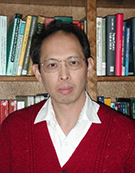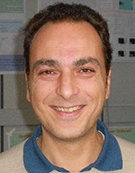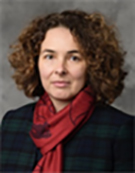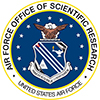2021 Pre-RGD32 Online Workshop on Recent Hot Topics in Rarefied Gas Dynamics
Given the continuous global health threat posed by the COVID-19 pandemic, in November, 2020 RGD32-LOC decided to postpone the 32nd International Symposium on Rarefied Gas Dynamics (RGD32) to the summer of 2022.
To continue engagement in the RGD community and bring together researchers, RGD32-LOC along with the International Advisory Committee (IAC) will hold the pre-RGD32 workshop on recent hot topics in RGD online (no registration fee; Zoom-platform; unlimited participants).
We cordially invite you to participate in this virtual Pre-RGD32 workshop.
The dates for the Pre-RGD32 online workshop are July 7th-10th (Wed-Sat; 3.5 hours each day), 2021 in GMT calendar. This 3-day (10.5 hours in total) workshop will cover three real-time invited lectures and real-time Q&A (10 mins) sessions for pre-recorded (20-30 mins) contributed presentations (with no proceeding publication). Presenters are invited to submit their one-page abstracts before June 1, 2021 by email at prergd32@gnu.ac.kr (primary) or prergd32nd@gmail.com (backup).
To continue engagement in the RGD community and bring together researchers, RGD32-LOC along with the International Advisory Committee (IAC) will hold the pre-RGD32 workshop on recent hot topics in RGD online (no registration fee; Zoom-platform; unlimited participants).
We cordially invite you to participate in this virtual Pre-RGD32 workshop.
The dates for the Pre-RGD32 online workshop are July 7th-10th (Wed-Sat; 3.5 hours each day), 2021 in GMT calendar. This 3-day (10.5 hours in total) workshop will cover three real-time invited lectures and real-time Q&A (10 mins) sessions for pre-recorded (20-30 mins) contributed presentations (with no proceeding publication). Presenters are invited to submit their one-page abstracts before June 1, 2021 by email at prergd32@gnu.ac.kr (primary) or prergd32nd@gmail.com (backup).
Program Overview
1 KST/JST 22:00 (CST 21:00, IST 18:30) (7-8th) 2 BST 14:00 (GMT 13:00, CEST 15:00) (7th) 3 PDT 06:00 (EDT 09:00) (7th)| Time | First Day Program (July 7-8th, Wed-Thu) | ||
|---|---|---|---|
|
22:00~22:101 14:00~14:102 06:00~06:103 |
Opening & Announcement of Best Student Presentation I (Chairs: R. S. Myong, D. Bruno, K. Xu, J. S. Wu) |
||
|
22:10~23:10 14:10~15:10 06:10~07:10 |
Invited Lecture I The Saga of LBE's Quest for RGD Effects Liu-Shi Luo, Old dominion University (Chair: L. Mieussens) |
||
| Break Time (10 mins) | |||
|
23:20~00:20 15:20~16:20 07:20~08:20 |
Boltzmann and Related Equations (Chair: S. Takata, Kyoto University) |
Numerical Methods for Kinetic Equations (Chair: K. Xu, HKUST) |
Gas-surface Interactions and Vacuum (Chair: E. Roohi, Xi'an Jiaotong University) |
| Break Time (10 mins) | |||
|
00:30~01:30 16:30~17:30 08:30~09:30 |
Lagrangian Methods for the BGK Model (Chair: S. B. Yun, Sungkyunkwan University) |
Numerical Methods for Kinetic Equations and Multiphase Flows (Chair: V. Titarev, Russian Academy of Sciences) |
Hypersonics: Theory and Simulation I (Chair: I. J. Wysong, AFRL) |
| Time | Second Day Program (July 8-9th, Thu-Fri) | ||
|---|---|---|---|
|
22:00~22:101 14:00~14:102 06:00~06:103 |
Opening & Announcement of Best Student Presentation II (Chairs: R. S. Myong, D. Bruno, K. Xu, J. S. Wu) |
||
|
22:10~23:10 14:10~15:10 06:10~07:10 |
Invited Lecture II Laser Induced Plasma Dynamics: From Atomic and Molecular Spectra to Particle FormationAlessandro De Giacomo, University of Bari (Chair: D. Bruno) |
||
| Break Time (10 mins) | |||
|
23:20~00:20 15:20~16:20 07:20~08:20 |
Kinetic Theory for Gases and Complex System (Chair: M. Torrilhon, RWTH Aachen University) |
Space Propulsion and Molecular Beams (Chair: E. J. Jun, Korea Advanced Institute of Science and Technology) |
Hypersonics: Theory and Simulation II (Chair: R. Kumar, IIT Kanpur) |
| Break Time (10 mins) | |||
|
00:30~01:40 16:30~17:40 08:30~09:40 |
Relativistic Kinetic Theory (Chair: L. Mieussens, Institut de Mathematiques de Bordeaux) |
Plasma Flows (Chair: J. S. Wu, National Chiao Tung University) |
Jets, Plumes and Surface Interaction in Space (Chair: K. Suzuki, University of Tokyo) |
| Time | Third Day Program (July 9-10th, Fri-Sat) | ||
|---|---|---|---|
|
08:00~08:101 00:00~00:102 16:00~16:103 |
Opening & Announcement of Best Student Presentation III (Chairs: R. S. Myong, D. Bruno, K. Xu, J. S. Wu) |
||
|
08:10~09:10 00:10~01:10 16:10~17:10 |
Invited Lecture III Fluid Mechanics in Fight Against COVID19 Pandemic Alina Alexeenko, Purdue University (Chair: R. S. Myong) |
||
| Break Time (10 mins) | |||
|
09:20~10:20 01:20~02:20 17:20~18:20 |
Data-driven & ML-based Mesoscale Modeling (Chair: T. K. Mankodi, IIT Guwahati) |
Micro- & Nano-scale Flows and Heat Transfer I (Chair: Y. Zhang, University of Edinburgh) |
Hypersonics: Experimental Methods (Chair: G. Park, Korea Advanced Institute of Science and Technology) |
| Break Time (10 mins) | |||
|
10:30~11:30 02:30~03:30 18:30~19:30 |
DSMC Methods (Chair: Y. A. Bondar, ITAM) |
Micro- & Nano-scale Flows and Heat Transfer II (Chair: B. H. Kim, University of Ulsan) |
Hypersonics: Vehicles (Chair: J. G. Kim, Sejong University) |
Opening and Announcement of Best Student Presentations
The Pre-RGD32 online workshop will begin with a plenary session of introducing the workshop and announcing the best student presentation (hosted by IAC chair).
Real-time Invited Lectures
Three distinguished plenary lectures will be given on recent hot topics in RGD for 50 minutes, followed by 10 minutes of Q&A.
 Li-Shi Luo
Professor, Mathematics & Statistics, Old Dominion University (2004-Present)
Li-Shi Luo
Professor, Mathematics & Statistics, Old Dominion University (2004-Present)
Senior Scientist, National Institute of Aerospace (2003-2004)
Senior Scientist, ICASE, NASA Langley Research Center (1996-2002)Professor Li-Shi is currently the holder of the Richard F. Barry, Jr. Endowed Professorship in Mathematics at Old Dominion University, Norfolk, Virginia, USA. Professor Luo¡¯s research interests include kinetic theory and nonequlibrium statistical mechanics, numerical methods for kinetic equations, and the kinetic methods for computational fluid dynamics (CFD). He has been working on the kinetic methods since late 1980s when he was a graduate student at the School of Physics of Georgia Institute of Technology and working at the Center for Nonlinear Studies, Theoretical Division of Los Alamos National Laboratory for his PhD thesis. Through the years he has published about 90 papers. He has made some notable contributions in the areas of kinetic methods for computational fluid dynamics and related subjects. In particular, his original contributions include the analytic solutions and numerical analysis of the lattice Boltzmann equation (LBE), and modeling and simulation by using the LBE. Professor Luo is a fellow of the American Physical Society (APS) in the Division of Fluid Dynamics (DFD). He has been actively collaborating with scientists all over the world in Germany, France, the United Kingdom, Japan, and China. He was instrumental for establishing the International Conferences for Mesoscopic Methods in Engineering & Science (ICMMES, www.icmmes.org), which is devoted to the kinetic methods, and has served the co-chair of the ICMMES Scientific Committee since 2004. Professor Luo is currently an Associated Editor the Journal of Computational Physics and an editorial board member for the Journal of Scientific Computing, and guest editor for the Computers & Fluids and Computers & Mathematics with Applications, and a past editorial board member for the Journal and Statistical Physics, and a past associate editor for the SIAM Journal of Scientific Computing.The Saga of LBE¡¯s Quest for RGD EffectsGiven its origin in kinetic theory and its direct connection to the Boltzmann equation, there has been a persistent effort to use the lattice Boltzmann equation (LBE) for modeling and simulation of nonequilibrium effects in rarefied gases, i.e., the effects due the finite Knudsen number Kn. This presentation will review the experience and knowledge in the quest to use the LBE for rarefied gas dynamics (RGD). We will first provide a summary of the mathematical basis of the LBE, i.e., its direction connection to the Boltzmann equation. The LBE is indeed a finite moment system with low-Mach number expansion of the distribution function on a regular discrete velocity set and a linearized collision model and it is closely related to the discrete velocity models (DVMs) of the Boltzmann equation. For low-Mach-number gaseous flows for which the LBE applies, the linearized Boltzmann equation can be recast as a Fredholm integral equation of the second kind, which can be analytically studied and numerically solved with high precision. By benchmarking against the data obtained from accurate solutions of some canonical flows, e.g., the planar Couette and Poiseuille flows, the LBE is shown to be capable of capturing the Knudsen layer. We hope this presentation can provide an accurate historical perspective, and the current status quo and capabilities of the LBE.
 Alessandro De Giacomo
Research Professor, Chemistry, University of Bari (2005-Present)
Alessandro De Giacomo
Research Professor, Chemistry, University of Bari (2005-Present)
Associate Researcher, Institute of Nanotechnology of the National Council of the Researches (NANOTEC-CNR), University of Bari (2005-Present)Prof. Alessandro De Giacomo, PhD, is a staff research professor of the Chemistry Department of the University of Bari in Italy and an associate researcher of the Institute of Nanotechnology of the National Council of the Researches (NANOTEC-CNR) where he has been carrying on fundamental studies on laser induced plasmas in different applications spacing from material science to analytical chemistry such like Laser Spectroscopy, Nanoparticles and carbon nanostructures synthesis by pulsed laser ablation in liquid, Laser Induced Breakdown Spectroscopy, Plasma assisted Pulsed Laser Deposition. The main active projects are in the field of aerospace and NPs-laser plasma interaction. At the present he is the head of the laser-matter interaction labs in the joint collaboration activity on laser plasmas between the University of Bari and the CNR-NANOTEC. Beyond the research activity and the academic work, Prof Alessandro De Giacomo is an active member of some scientific committees of international conferences and a member of some editorial boards of international journals as well as a reviewer of several funding agencies in Europe and North America. Since 2017 he is the chief editor of Spectrochimica Acta Part B atomic spectroscopy, Elesvier. Up to now he published about 100 papers with more than 4000 citations and h=38 and he has presented more than 30 invited and plenary lectures in international conferences.Laser Induced Plasma Dynamics: From Atomic and Molecular Spectra to Particle FormationLaser Induced Plasma (LIP) is getting growing interest in recent decades because such plasmas can be produced with great experimental flexibility by simply steering and focusing the laser pulse on the target/sample. For example LIP has been used in analytical chemistry for elemental analysis, as well as in materials science for the production of thin films, material modification, and nanomaterial production and in propulsion applications. Beyond the practical applications, the LIP represents an extremely interesting system from the fundamental point of view, because during the expansion the characteristics and properties of the plasma change dramatically. These changes permit the investigation of atomic plasmas, from non-ideal plasma to ideal plasma in different thermodynamic states. These include Local Thermal Equilibrium (LTE), partial Local Thermal Equilibrium (pLTE) and reactive plasma, with production of molecules as the result of the interaction of the plasma with the surrounding environment. The induction of the plasma laser starts with the excitation of the electrons in the irradiated material and with the generation of free electrons by multi-photon ionization. After a few tens of femtoseconds the ejection of electrons and ions occurs massively. The ablated matter is then heated by the rest of the laser pulse, increasing the kinetic energy of the electrons by inverse bremsstrahlung and promoting further ionization by electron collision and photoionization. Although the control of the ablation process for a given laser pulse is limited, the evolution of the plasma is strictly dependent on the dynamics of the LIP. This implies that it is possible to operate on the plasma characteristics by controlling the expansion features with different background environment. In this work several optical diagnostics, including high temporally and spatially resolved Emission Spectroscopy, Shadowgraphy, fast imaging, laser absorption and scattering have been used for discussing the fundamental aspects of LIP in the frames of different applications.
 Alina Alexeenko
Professor, Aeronautics and Astronautics & Chemical Engineering, Purdue University (2006-Present)
Alina Alexeenko is a professor of aeronautics and astronautics and professor of chemical engineering at Purdue University. She also currently serves as associate dean for undergraduate education at Purdue's College of Engineering. Her research expertise is in computational rarefied gas dynamics, kinetic simulation of gases and plasmas, coupled heat and mass transfer analysis in applications to high-altitude aerothermodynamics, MEMS and micropropulsion and vacuum technology. Alexeenko received her PhD in Aerospace Engineering from the Pennsylvania State University in 2003 and was a WiSE post-doctoral fellow at University of Southern California from 2004 to 2006. She joined Purdue University faculty as an assistant professor in 2006. Dr. Alexeenko is an associate fellow of American Institute of Aeronautics and Astronautics (AIAA) and served as chair of AIAA Thermophysics Technical Committee for 2016-2018. She has authored over 200 journal and conference papers and is a co-inventor on 7 patents. Dr. Alexeenko has been collaborating broadly with industry firms on design and improvement of lyophilization equipment and processes since 2008 and is a founding co-director of Advanced Lyophilization Technology Hub - LyoHUB established in 2014.Fluid Mechanics in Fight Against COVID19 PandemicFluid mechanics has played a major - albeit sometimes uncredited - role in the global response to the COVID19 pandemic. Well-publicized visualization of exhaled droplet cloud transport helped develop and accelerate acceptance of social distancing guidelines to reduce the airborne transmission of SARS-CoV-2 virus. Less visible but more impactful in ultimately ending the pandemic are the advances in microfluidics coupled with biotechnology that led to development and manufacturing of new COVID19 vaccines at an unprecedented speed and scale. COVID19 vaccines by Pfizer-BioNTech and Moderna are based on messenger RNA (mRNA) encapsulated in lipid nanoparticles (LNP) for delivery of fragile RNA into the cell. The mRNA vaccine production does not require complex and expensive cell culture bioreactors and opens an era when customizable vaccines and therapeutics can be manufactured on demand. In these vaccines, an ionizable lipid forms a shell to preserve and deliver the mRNA to patient cells to prompt production of SARS-CoV-2 spike proteins which triggers and trains the immune system. Microfluidic mixing of lipids, buffers and nucleic acids in an ethanol solution has been the backbone of manufacturing of these vaccines by providing a reliable method of packaging the sensitive molecules in a tight biocompatible particle of about 100 nm. The incredibly complex nature of LNP-mRNA makes them very unstable in the liquid phase requiring cold storage. The cold chain limits the global distribution of vaccines. Efforts by Pfizer and other manufacturers to develop lyophilized formulations of COVID19 vaccines have been reported recently. Lyophilization/freeze-drying requires vacuum (<1 torr) and involves rarefied transport through porous media. We will review the various fluid dynamic and rarefied gas flow aspects of potential breakthrough freeze-drying technologies required for increased global capacity for manufacture of lyophilized pharmaceuticals and vaccines.
Alina Alexeenko
Professor, Aeronautics and Astronautics & Chemical Engineering, Purdue University (2006-Present)
Alina Alexeenko is a professor of aeronautics and astronautics and professor of chemical engineering at Purdue University. She also currently serves as associate dean for undergraduate education at Purdue's College of Engineering. Her research expertise is in computational rarefied gas dynamics, kinetic simulation of gases and plasmas, coupled heat and mass transfer analysis in applications to high-altitude aerothermodynamics, MEMS and micropropulsion and vacuum technology. Alexeenko received her PhD in Aerospace Engineering from the Pennsylvania State University in 2003 and was a WiSE post-doctoral fellow at University of Southern California from 2004 to 2006. She joined Purdue University faculty as an assistant professor in 2006. Dr. Alexeenko is an associate fellow of American Institute of Aeronautics and Astronautics (AIAA) and served as chair of AIAA Thermophysics Technical Committee for 2016-2018. She has authored over 200 journal and conference papers and is a co-inventor on 7 patents. Dr. Alexeenko has been collaborating broadly with industry firms on design and improvement of lyophilization equipment and processes since 2008 and is a founding co-director of Advanced Lyophilization Technology Hub - LyoHUB established in 2014.Fluid Mechanics in Fight Against COVID19 PandemicFluid mechanics has played a major - albeit sometimes uncredited - role in the global response to the COVID19 pandemic. Well-publicized visualization of exhaled droplet cloud transport helped develop and accelerate acceptance of social distancing guidelines to reduce the airborne transmission of SARS-CoV-2 virus. Less visible but more impactful in ultimately ending the pandemic are the advances in microfluidics coupled with biotechnology that led to development and manufacturing of new COVID19 vaccines at an unprecedented speed and scale. COVID19 vaccines by Pfizer-BioNTech and Moderna are based on messenger RNA (mRNA) encapsulated in lipid nanoparticles (LNP) for delivery of fragile RNA into the cell. The mRNA vaccine production does not require complex and expensive cell culture bioreactors and opens an era when customizable vaccines and therapeutics can be manufactured on demand. In these vaccines, an ionizable lipid forms a shell to preserve and deliver the mRNA to patient cells to prompt production of SARS-CoV-2 spike proteins which triggers and trains the immune system. Microfluidic mixing of lipids, buffers and nucleic acids in an ethanol solution has been the backbone of manufacturing of these vaccines by providing a reliable method of packaging the sensitive molecules in a tight biocompatible particle of about 100 nm. The incredibly complex nature of LNP-mRNA makes them very unstable in the liquid phase requiring cold storage. The cold chain limits the global distribution of vaccines. Efforts by Pfizer and other manufacturers to develop lyophilized formulations of COVID19 vaccines have been reported recently. Lyophilization/freeze-drying requires vacuum (<1 torr) and involves rarefied transport through porous media. We will review the various fluid dynamic and rarefied gas flow aspects of potential breakthrough freeze-drying technologies required for increased global capacity for manufacture of lyophilized pharmaceuticals and vaccines.
Pre-recorded Contributed Presentations and Real-time Discussion Sessions
The pre-recorded contributed presentation videos will be collected by email (prergd32@gnu.ac.kr) and will be uploaded on the website in advance. Each presentation should be 20-30 minutes long. The videos will be available from June 21st to July 20th in 2021. Real-time discussion on the contributed presentations will be held for 10 minutes with the session chairs.
Dates
| 19 March 2021 | RGD LinkedIn Page Open |
| 10 March 2021 | Call for Presentations (1-Page Abstract) |
| 8 May 2021 | Extension of Abstract Submission Deadline (New Deadline: 1 June 2021) |
| 1 June 2021 | Abstract Deadline |
| 1 June 2021 |
Notification of Acceptance Book of Abstracts Available |
| 21 June 2021 | Pre-recorded Presentations Available |
| 23 June 2021 | Presentation Video Open |
| 7-9 July 2021 | Online Workshop |







